Simple hygienic extraction of honey for a small-scale beekeeper
This blog is the first in a series of three, which together aim to show a simple and hygienic method of honey processing for a small-scale beekeeper. The focus of this blog is the extraction part of the process and will start with supers of honey through to filtered honey in buckets.
With the warm and sunny weather during May, June and July, here in rural Northumberland, the bees have been collecting large quantities of nectar and turning it into honey.
What regulations apply to the small-scale honey processor?
Honey needs to be handled with the same precautions as other foods. It may not be as high risk as dealing with raw meat or raw dairy products but the legislation regarding food safety & hygiene still applies, even if you are only selling directly through a local shop, from your door, at a local fair or at a farmer’s market.
Small-scale honey processors don’t need to register their premises but are expected to ensure that the place they process the honey is clean and hygienic, the honey is free from contamination and that the people doing the honey processing work in a hygienic way.
On my journey to become a BBKA Master beekeeper, I found studying for BBKA Module 2, Honey Bee Products & Forage, a great help in learning about honey processing legislation and techniques. Details of the requirements for Food Hygiene Regulations and the Food Safety act 1990 can be found on the Food Standards Agency website.
How do I set up a room for honey processing?
When getting ready for the BBKA General Husbandry Assessment, I set up my utility room as a honey processing room. This involved putting PVC sheeting on the lower part of the walls, installing a double sink, getting a stainless-steel work bench and putting down a removable sheet of lino on the floor. I also did an online Food Hygiene for Hygiene Supervisors certificate.

Here is my honey room set up for a round of honey processing. From left to right:-
- Me – Scrubbed up, with hair net and disposable apron on.
- 3 Frame extractor – Thorne had an offer on a few years ago and I bought one for £160 brand new.
- Honey warming cabinet – More on that in part 3 of the series on honey processing.
- Various honey buckets & filters – I tend to get my buckets and filters from Amazon or Thorne.
- Supers ready to process – Notice the black plastic tray used to stack the supers on. They are great for carrying supers from the apiary.
- Stainless work surface – I bought this on ebay a couple of years ago for £75.
- Uncapping Tray & Uncapping knife – The uncapping knife cost £5 in a Thorne’s sale. The uncapping tray is home-made and is probably the best piece of equipment I have.
- Empty frames and supers – Again on top of a plastic tray, to catch any drips from the frames.
The aim of the layout is to create a flow, which does not involve me having to move around too much or carry dripping frames very far. Everything can get very messy otherwise as you get stuck to the floor!
It helps if the room is warm while you are honey processing and it is important to keep windows and doors closed to avoid any flying insects, as well as trying to keep honey covered whenever possible.
How do I check the moisture content before honey processing?
The Honey Regulations 2015 require the water content of honey to be no more than 20%, for most floral honey and 23% for some honey, like heather. If the honey is fully capped, then you can be sure that the bees considered the water content to be low enough to prevent it from going off over winter and so can you. If you have some frames which are partially capped, or to confirm it anyway, a refractometer can be used.
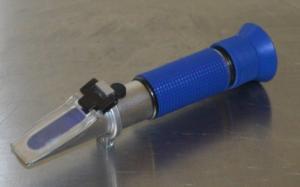
I paid about £20 for mine a couple of years ago from Amazon. They are very simple to use and give an instant and accurate measure of the water content.
How do I uncap frames of honey?
The first stage of the process is to uncap the sealed frames of honey, over an un-capping tray.
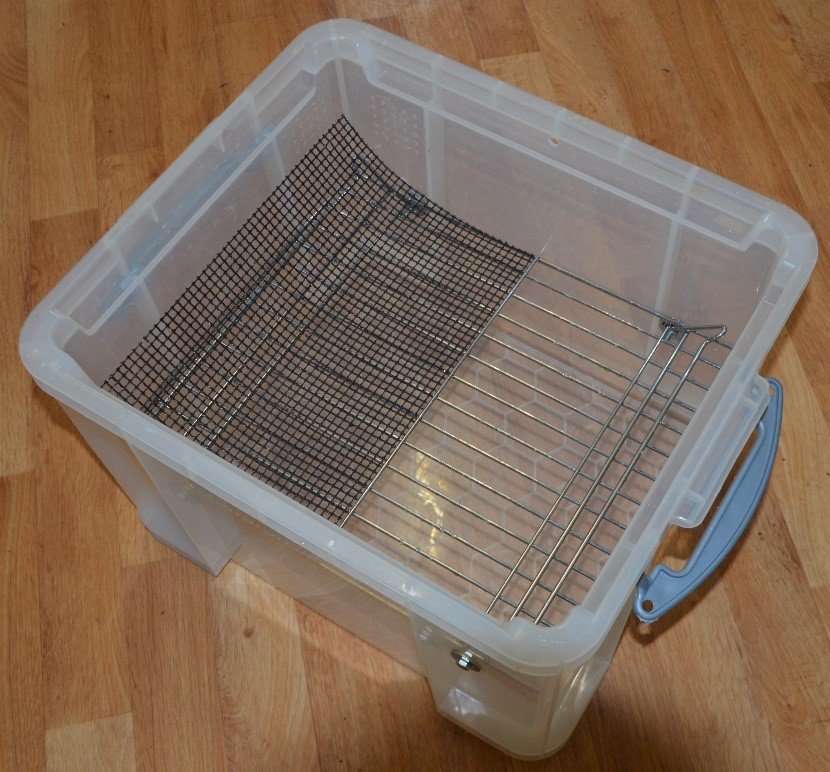
I’m really pleased with my home-made capping tray. It is based on a “35L really useful box” and a 32cm by 38cm sturdy cake stand. Two holes were drilled half way down each side to take four M8 food grade stainless steel nuts, bolts and washers. The bolts are not attached to the cake stand but just provide something for it to rest on. Two sheets of silicon baking mesh cover the upside-down cake stand and a baton is used across the top of the box to support the frame being uncapped. Altogether it cost less than £40 and I find it works great.
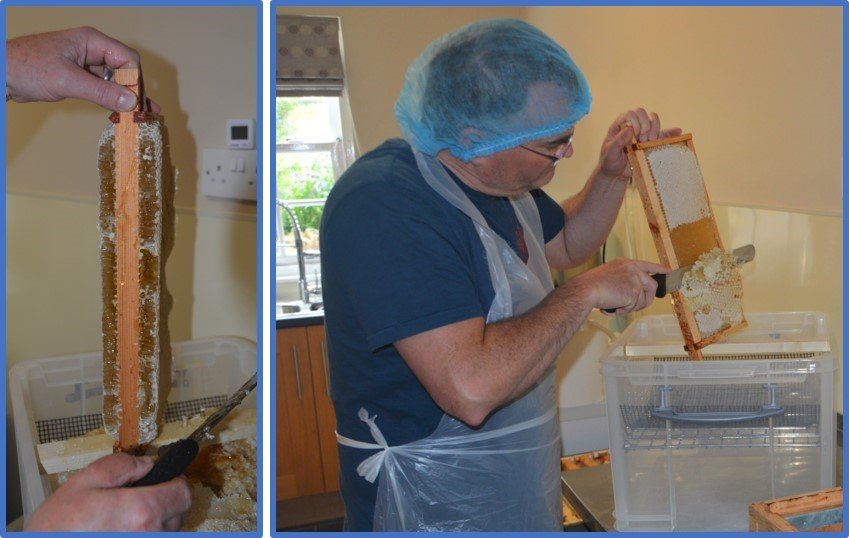
How do I extract & filter honey from the frames & cappings?
Once the frames are uncapped the frames are put into the tangential extractor. My extractor only takes three frames at a time and is manual. Being a tangential extractor, the frames need to be spun on one side and then the other, which is bit of a faff. Care must also be taken, particularly with the first side, not to “burst” the comb, by spinning too fast. That’s all you get for a £160 extractor! I find it OK for doing five or six supers of frames, in an hour or so.
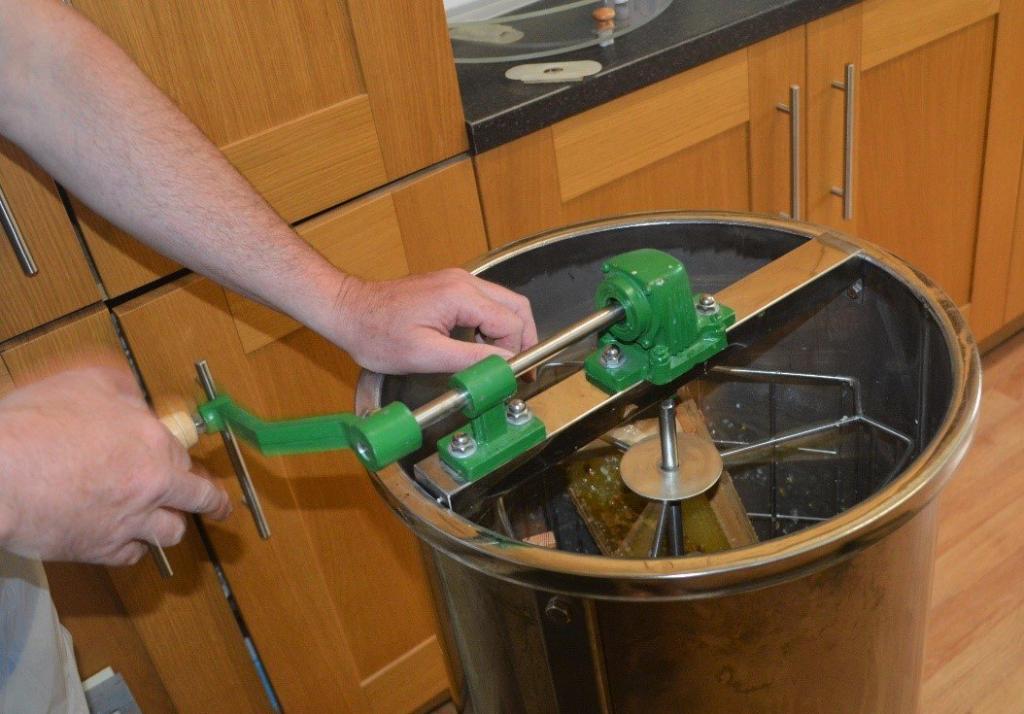
Meanwhile, the honey in the cappings is dripping through into the bottom of the uncapping tray, below the cake stand & mesh. It can take a few hours, or overnight, for most of the honey to drip off the cappings but its always a surprise just how much honey there is from the cappings.
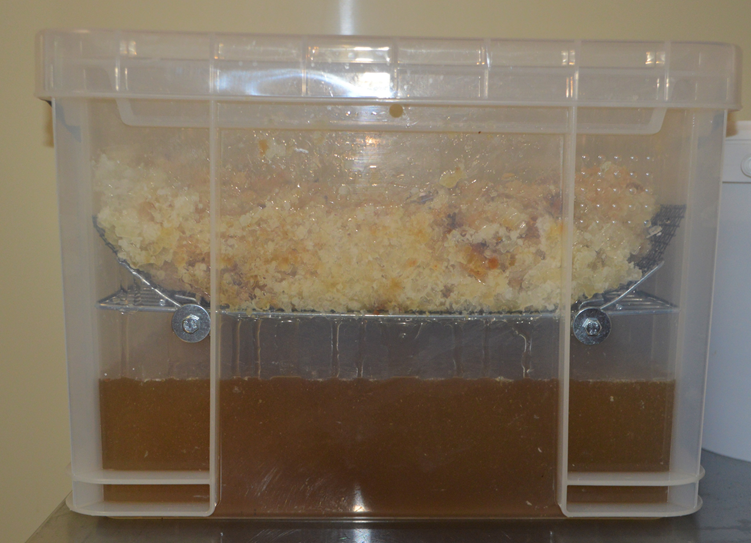
I recently extracted 45kg of honey. 25Kg of it was removed from uncapped frames by the tangential extractor and 20kg of it was collected from cappings in my uncapping tray!
How and why do I filter the honey?
Filtering the honey extracted from the frames in the extractor and the cappings in the uncapping tray is an essential step in ensuring there is no contamination in the honey. The prime aim is to remove any bits of wax, wood, bee or any other physical debris from the honey.
Mesh size is important. The standard double mesh filters from bee equipment suppliers, are usually 1.5mm and 0.5 mm. These are great for taking debris out while still allowing most of the pollen through. If honey is been filtered “for show” a finer mesh of 0.2mm (200 micron) is often used, to improve clarity but this can significantly reduce the amount of natural pollen in the honey.
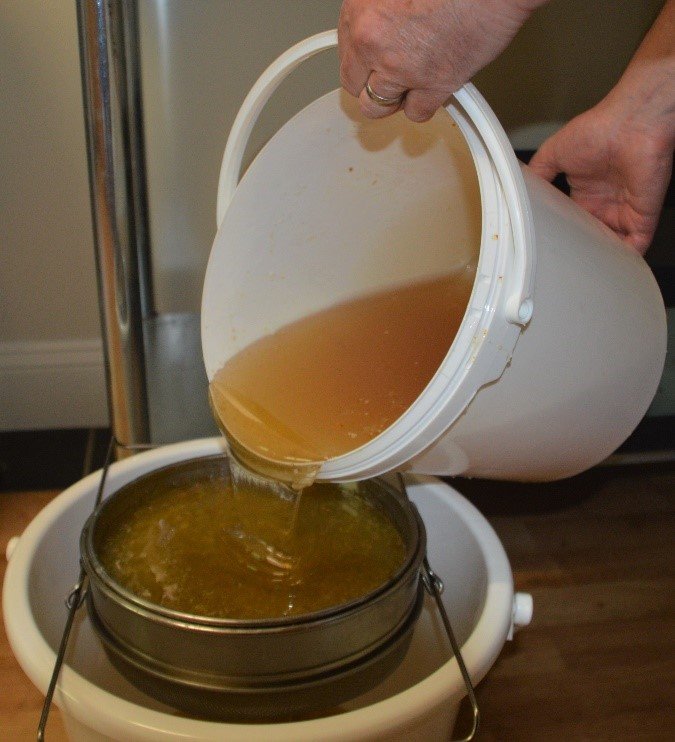
Once the honey is filtered and is into honey buckets, it is left to settle. After 24 hours any bubbles in the honey rise to the surface. This “scum” is unsightly but is simply air bubbles on the surface and can be skimmed off with a spoon to avoid it getting into the jarred honey.
Summary – Extraction
Extraction of honey can be done in a simple and hygienic way, with a minimum of equipment, by the small-scale beekeeper, while still satisfying the regulations. If you only want to process a few frames or a single super of honey, you won’t need more than a simple capping tray and a honey bucket with a valve and a filter, to get started.
If you sell your honey, even from your door or at local farmers markets, there are still food safety, hygiene, packaging and honey regulations that apply. They do not have to be onerous for the small-scale beekeeper and are even a helpful way to reassure people who buy your honey that it is good honey and safe to eat.
Click here to see the second blog on simple hygienic honey processing for the small-scale beekeeper.
If you have found this interesting or helpful, please subscribe to my blog, or like/share on Facebook.

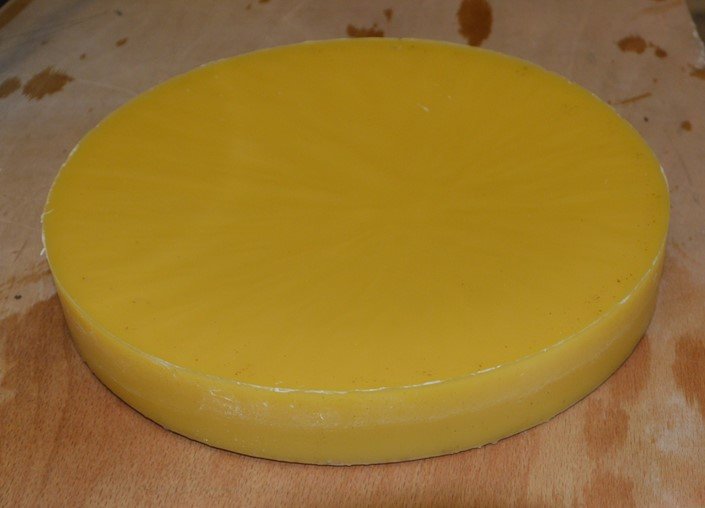

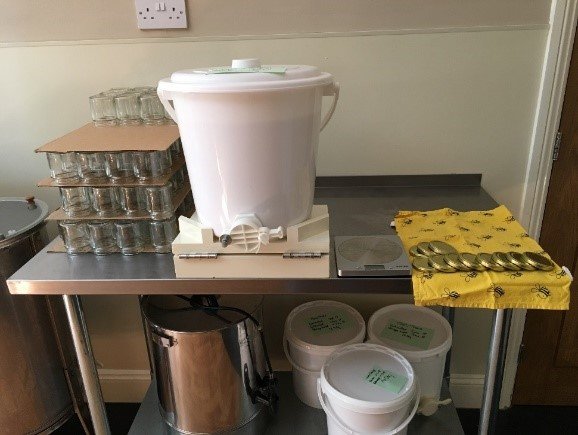
Hi Ian
Brilliant again. Check out Versotile http://www.versotile-beehive-cover.co.uk/
I use them and find them really good.
Best Regards
Stuart
Thanks Ian, I like your uncapping tray, a project for next year maybe. It looks like you run approx 10 frames to a super, and then cut down to the wood of the frame when uncapping, using the frame as a guide, is that right? I used an uncapping fork this time (my 1st significant harvest), advantage was the thicker comb was left largely intact in terms of thickness, and less honey with the cappings (and I don’t have an uncapping tray). But It was slow going and I did find the extractor then squished the thicker comb in places anyway, so open to other methods next year.
I alway enjoy your blogs – look forward to the next installment.
Cheers
Matt.
Hi Matt
Thanks for the feedback, its motivating.
I find the capping tray really useful. If I only have a super or two I won’t even get the extractor sticky, I just mush up the combs in the top of the box and let them drip through and then recover the wax. I also use this technique for heather honey (it just takes longer to drip through!).
I use wide spaced plastic ends in the super. I can get eight of them in and a ninth without spacers. This puts alot more honey on each frame and meand the bees store more honey in less wax. Although it does mean a lot more honey is going into the capping tray!
Kind Regards
Ian
Hi Ian,
I didn’t forget about this – saw a ‘really useful box’ in Morrisons yesterday, bought the other bits and pieces today – about £20 in total!
5 supers to extract today – should make life loads easier. Thanks again for the idea & all the best for the season.
Hi Matt
Brilliant. Wow 5 supers already. You must be having a great season.
Good Luck.
Ian
Hi Ian, first year beekeeper here, thanks a lot for this great article. I have two questions:
1) Is this box food safe? I can’t see this information anywhere on Amazon
2) What is the baton you use to rest the frames on?
Hi Adam
The box is plastic and cleaned with hot soapy water then allowed to completely dry before and after use. It is not used to “store” honey and only has honey in it while processing. The baton is made of wood. Its scrubbed and allowed to thoroughly dry after use. The honey is also fine filtered after processing. If you are concerned about using wood then you could try to find some nylon bar or get one made in stainless steel. Do let me know if you find something.
Kind Regards
Where did you buy the drip trays under the supers?
They are grow bag trays from a local garden centre. 50cm x 50cm.
I have seen them on amazon too. Try searching plastic tray 50cm x 50cm.
Regards
Where did you find the cake stand. Can’t seem to find.
I searched on Amazon for “cake rack folding” with the dimensions of the inside of the box but you could try other online stores too.